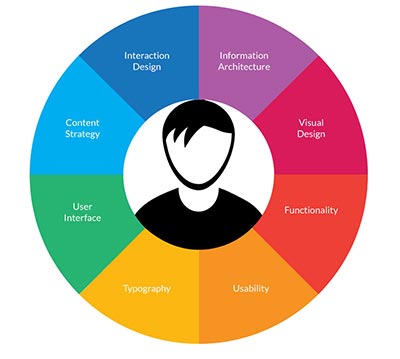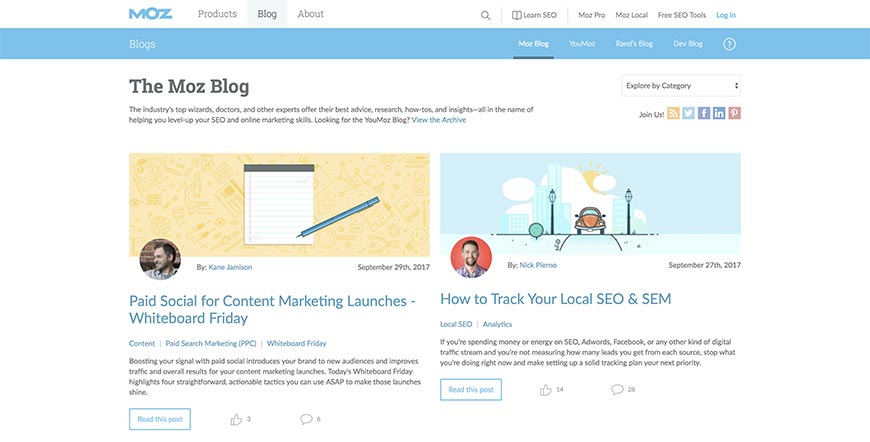Why Material Is Such An Essential Part Of The Website Design Process
When embarking on a brand-new site project, designers tend to concentrate on the visual appeals and performance of their work. This indicates that content writing is a job often pressed onto the customer to fulfil. The unfortunate effect of this decision is that the site's content ultimately is available in too late, in the wrong format, and of poor quality.
When it comes to writing content, I'm sorry to state that customers are frequently just not excellent. My customers are incredible in many methods, but writing persuasive and useful content that triggers the reader to action, is usually not one of their talents.
As a web designer myself, I have actually been guilty of motivating my clients to produce their own content. In one job I used Google Drive to manage the process.
Sadly, the client needed a lot of coaching on how to utilize the file editor and when they lastly produced the content much of it did not have focus. I had to tell them it was impracticable. They went back to the drawing board and the job took months longer than it otherwise might have.
I often feel like I've spent half my profession waiting around for clients to compose content. The other half has been invested trying to ensure whatever they produce doesn't mess up the style.
Content production within the site style process can be tricky to manage. In this article I share my essential knowings from years of experience, along with offer some pointers to boost your own procedures.
The Difference Between Design And Content #
In its most necessary form, content is the material that users take in. Content can take the shape of words, pictures, video and audio. It is the concrete product that individuals cognitively consume, where style is the discussion of that material, affecting how individuals feel in the minute. They are symbiotic, yet unique in their own.
A typical misunderstanding among clients, and even designers themselves, is that style and material are one and the exact same. As such, it becomes exceptionally tough to understand where the work of the designer ends. A lot of web designers will acknowledge that it is not their job to develop video material, however at the exact same time, they may stray into the production of written content. This is not an issue if the designer has the proficiency and resources to deliver on this fundamental aspect of the job, however frequently they do not, and nor does their client. The reality is that design and content are entirely separate.
It is essential, for that reason, that content be offered its place along with visual design throughout the web development procedure.

Why We Should Start With Content #
There is a widely known maxim born out of the structure market in the 1800s which mentions that type follows function. Created by designer Louis Sullivan, his complete quote expresses this idea eloquently:
Architects understand that if a structure does not satisfy real world needs, it would be unwise, despite how great it appeared. This law can be applied directly to the method we develop sites today. The relatively contemporary role of the UX designer was intended to serve as the glue in between kind and function, bridging the gap between what something appears like and how it is engaged with. The fact is that couple of tasks carry the budget plan for a devoted UX designer, and as such this responsibility frequently falls to the web designer who may be more concerned with aesthetic appeals.
The client, who pertains to us for assistance, is mostly thinking about what a site can do for them. Their function is to bring their business objectives and expert knowledge, not to write pages of content.
Can you see the issue? A spacious space has emerged, one that enables the production of material to fail. We need to bring content production into our site design process, which implies producing an area for it at the start.
Naturally, this extension to our project will incur a greater cost. This typically indicates the need for professional content production is consulted with resistance. Let's take a look at some methods for handling this.
What To Do If Your Client Can not Afford Copywriting #
Not only does content production frequently represent an undesirable deviation for a designer, however customers also see it as an unneeded cost. We must challenge this mindset, which starts by covering the positives. Expert site copy will:
• Consolidate and solidify the overall brand name message.
• Save a lot of time for you and the customer.
• Make the design (and the style process) more effective.
• Result in a much better end user experience.

The bottom line? Professionally written content will drive a greater return on the general financial investment.
The reason that customers often declare they "can not afford" copywriting is since they do not understand what it can do for them. They do not appreciate the capacity for a return, and for that reason they are hesitant to make the financial investment. Basic economics commands that if you can make the offer engaging, the person will desire it. Use those bullet points above to instil the vigor of good content, not just online, but in service comms more typically.
I just recently worked with a business whose services proved an obstacle to comprehend at first, however with the assistance of a copywriter we developed a sitemap that showed both the end-user's requirements and covered what was on offer succinctly. This released me as much as work on the visual style system and more technical integrations. Without this investment in content production, the end outcome would have been much poorer for it.
Now let's take a look at some strategies for plugging content composing into the website creation procedure.
Methods For Stitching Design And Content Together #
If you wish to create an excellent site that satisfies the business goals of your customer and does not give you the headache of sourcing material along the method, you will need to offer copywriting its due attention. After years of having problem with this, what follows are some core concepts I've used to enhance the process.
1. RUN A CONTENT WORKSHOP WITH YOUR CLIENT #
Investing a couple of hours concentrating on content enables you to work out what is important to the task. It also internalizes a team-wide sense of how crucial material is. Here are some ways you might run such a session:
• Discuss the overarching goals by asking good, open-ended concerns such as "what might a visitor desire from the homepage? Who would discover this piece of material beneficial? How might the visitor proceed after having read this page?"
• Intentionally guide the conversation far from how things may look, rather concentrating on messaging, and how we expect the visitor to feel.
• Consider front-loading the session with a definition of content and showing some good/bad examples. Ask the team for their live feedback to determine and assist their understanding.
This session is as much symbolic as it is tangible in usage. Whilst some strong concepts will come out of the meeting, it's genuine purpose is to get the customer on board with the concept that style and content are separate deliverables. Taking this a step further, you might choose to run this workshop as a specific item for which the client pays a set cost, prior to you even begin speaking about site style.
2. PARTNER WITH A COPYWRITER AHEAD OF TIME #
By bringing a copywriter into your process you can effectively combine their service with yours. A typical approach many web developers take when preparing a quote for a client is to make a list of each service. They might divide front-end and back-end development into different deliverables. This is an issue, since it develops a chance for the client to ask unhelpful concerns. Querying a financial investment is, of course, sensible, but in this case it can force you to justify specific services that are required to provide the entire.
One of the very best methods to incorporate content composing into your shipment procedure is to merely start behaving like it is a non-negotiable action. The next time you prepare a quote, consist of copywriting as a basic part of the process like any other. Here is an example declaration you can drop into your propositions to help with this:
Note: A strong content technique is fundamental to making your site redesign a success. As part of this proposition we will establish content for your brand-new website that will resonate with your visitors and prompt action from them. We will conduct an interview with you to comprehend your audience and objectives, and incorporate this into our content composing procedure.
If this is consulted with concerns, or if your customer wants to drop this part to conserve costs, refer back to the benefits I laid out previously.
3. USE REAL CONTENT AS QUICKLY AS POSSIBLE #
To this day I in some cases find myself creating designs utilizing Lorem Ipsum placeholder copy. I slap myself on the wrist whenever. In a perfect world, design would not begin until you have, at least, some of the content. It's hard to bring a piece of design to life unless its purpose is rooted in a real life usage case, and placeholder text simply does not accomplish that.
Don't be lured, either, to start writing material as you design. I have attempted this, and sadly the copy tends to get subsumed by the design procedure and forgotten about. Only when it's time to launch does someone question it, by which point it ends up being a headache to put right. You do not wish to be retrofitting a content method deep into the design procedure; utilize real content as early in your project as you can.
4. QUESTION THE BRAND #
Our clients mission and values offer a deep well of material that many designers hardly dip their feet into. Lots of insights and content concepts can be found here, but it suggests going back from the website procedure to question the brand. This can seem quite difficult, but it is often worth doing in order to understand the core inspirations of the project. Here are some questions you can ask your customer to help form a material technique:
• Why do you do what you do?
• How does your product or service make your customer's life much better?
• How do your clients explain you?
• Who are your competitors and how do you vary?
• Where will this job take you?
The objective here is to get the customer considering themselves and their clients. Your aim is to translate their reactions into beneficial material and style choices. When a client is struggling to comprehend the worth of the substance of content, these discussions can lead to a couple of "lightbulb" minutes.
If you're feeling bold, think about bringing your customers' consumers into the discussion as well to include an additional measurement. This might feel a little scary, however you might do it in any of the following ways:
• Ask for existing feedback that your customer might have gotten from their consumers. Try to find common questions or complaints.
• Conduct a study with their customers, acting either on behalf of the customer or as yourself.
• Organise a series of video interviews with their clients. This could add enormous value to the job and level you up to a more essential position in the eyes of the customer.
• Bring a handful of consumers into your material workshop with the customer to include them in conversations.
It's important to keep in mind here that when questioning the brand, we're just searching for responses. How do individuals experience this company? Promote an unbiased program to minimize in-fighting, and this extra mile will serve you extremely well.
5. IF THE CLIENT IS TO WRITE THEIR OWN CONTENT, MAKE IT EASY FOR THEM #
In situations when the customer has internal resources to produce copy, your job will be to direct them. Here are some pointers for keeping the job on track:
• Delay delving into visual design up until you have some real material to work with.
• Give the customer a content-delivery due date.
• Set up all the files for the client as Word files or Google Drive files. Make sure each is reflected by a page within the sitemap, and ideally a wireframe to symbolize layout. This offers the client a structure to write within.
• Give them design templates and utilize restraints to assist them produce material that will work well. Have a field for "page title" and state that it should be no more than 6-8 words. Here is a template that I have utilized with my clients in the past.

• If there is no budget plan to run a content workshop, have a pre-recorded video you can point them to or a short article on your blog that describes the point of good content.
• Make content production the duty of one person. If the whole group input, the task will quickly spiral.
Essentially, in cases where your client does not purchase external copywriting, you need to look for to make the procedure as basic as possible. Delegated their own gadgets, you might get content in dribs and drabs, and when you lastly piece it together you'll end up with a Frankenstein's Monster. Making it simple for them by handling the procedure can assist prevent this.
Some Resources To Help Facilitate The Content Process #
Whether you are looking at the material yourself, dealing with a copywriter or leaning on your customer to supply it, you require tools and a process. A common approach, and one that has worked for me, usually follows these steps:
• You examine the existing site to get a deeper understanding of material that a) requires to be reworded, b) needs to be deleted or, c) requires to be produced from scratch.
• You deal with the customer and author to develop a sitemap, the overarching structure of the get more info website content. Gloomaps is a wonderful tool to help with this, but there are more sophisticated tools such as Miro that supply a collective space.
• You mock up content layout utilizing wireframe designs of essential pages. You can go deep into this or keep it surface-level. There are devoted apps like UXPin and Mockflow, but I discover that Adobe Illustrator works well with the best wireframe UI package.
The key principle here is to include your client in conversations about material and structure. Frequently designers disappear into a shaded space, emerging weeks later with a "completed" item. Whilst some clients value a "done for you" service, most find higher satisfaction by being brought into the process. You'll do better work when you draw on their understanding and experiences, too.
In Summary: Take Content Seriously #
The uncomfortable reality of the matter is that content is the important things you're developing. Influential copywriter and online marketer Eugene Schwartz said:
" Copy is not composed, it is assembled."
Best web designers know that their job is about composition and user experience. We provide the interface to that which the reader seeks. It's often simple to forget this when faced with the politics and preferences of many web design projects. We get our heads turned by new patterns, elegant CSS animations and the most recent structures. We get penetrated the issue, which is what makes us designers and developers in the very first place.
But there will always be a need to refocus. To align our work with the core objectives of the job, and in many cases, that is merely to get a message throughout in the clearest method possible.
We require much better material on the web, which requires investment. As designers we can fly the flag for professional copywriters, or we can distract ourselves with looks. I've done both, and I can tell you with self-confidence that the previous produces better work, more quickly, and with less inconvenience.